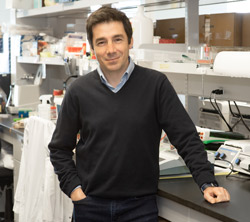Early Treatment No Barrier to Reservoir Formation
By Jeffrey Laurence, M.D.
Research question
Little is known about the nature and location of cells in which HIV initiates a productive infection in blood and lymph nodes during the first few days after infection, or the point at which latent infection is established.

Findings
This study examined 21 individuals in Bangkok, Thailand, who were acutely infected with HIV and initiated antiretroviral therapy (ART) within a median of two days after diagnosis. Five participants who contributed both blood and lymph node samples to the study were examined as early as 11–16 days post-infection. Most T cells infected during the first weeks of infection had viruses that had not integrated into host cell DNA. They were rapidly cleared with ART.
Two populations of latently infected cells were also characterized. Some were relatively easy to reactivate and clear. However, rare “deeply latent” HIV—so called as these fully intact proviruses were very difficult to convert to active HIV growth despite use of powerful T cell stimulants (PMA and ionomycin)—were present in the earliest days post-infection. Some of these deeply latent cells disappeared over time —their prevalence dropped by two-thirds, from 28% to 9%, over two years of therapy. But they were still there. Sequencing of viruses harbored by those cells showed that they were unchanged over that period, indicating that cell growth was not required to maintain latent reservoirs. Finally, it was documented that the very first cells targeted by HIV were enriched for T cells bearing receptors capable of recognizing certain specific bacteria and viruses: tuberculosis, influenza, and HIV itself.

Impact
The authors demonstrate the simultaneous establishment of several pools of actively and latently infected T cells in the blood and lymph nodes of people living with HIV. The latent HIV reservoir was detectable as early as 11 days post-infection and a portion of it proved very difficult to activate and, by extension, kill. This suggests that even very early initiation of antiretroviral drugs will not block establishment of the reservoir.
amfAR’s role
amfAR was a funder of this research through a grant to Nicolas Chomont, Ph.D., and Jintanat Ananworanich, M.D., Ph.D.
Original article
http://www.ncbi.nlm.nih.gov/pubmed/36804957
Dr. Laurence is amfAR’s senior scientific consultant.
Share This:
